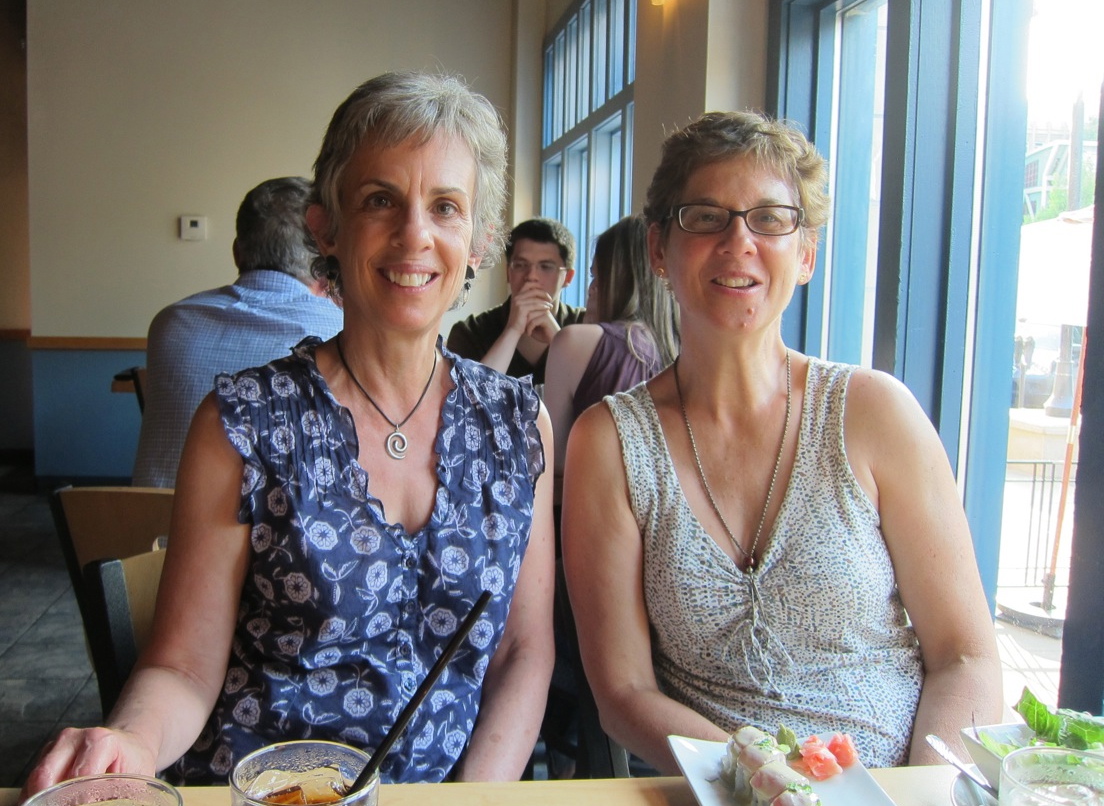I've been away from my studio recently, visiting friends and relatives back in the Midwest. Whenever I go, I always come back with a fresh outlook, a new way of seeing things. Iowa City is especially stimulating, being home to storied and innovative writing programs and a virtual beehive of activity during the summer months, when people from all over the world come to hone their craft.
Each summer my old friend Carol Spindel makes the journey there to teach. Carol and I met at the University of Iowa as undergraduates in the art department and although she went on to the art of writing, we like to meet whenever we can and see how our two worlds of text and image pair up.
One morning, she arrived for breakfast with a bag of chocolates, leftovers from one of her writing class exercises. She described the exercise to me.
There were two kinds of chocolate in the bag. She asked students to taste both kinds of chocolate and then, without resorting to metaphor, describe the tastes of each. It turns out to be very difficult, but it is a wonderful (and tasty) exercise for sharpening one's descriptive skills.
Love of writing runs in my family. As a writer and a teacher of writing, my dad was responsible for starting the the Nonfiction Writing Program at the University of Iowa. Now in retirement, he's written a number of books and helps to edit a series of books on the essay for University of Iowa Press.
When I visit, he always shows me what he's up to. Pulling me over to the old Chippendale sofa that's ruled the roost since childhood, he flipped open his Macbook. (At 80, he's far more of a Mac savant than I). He told me that he's writing a book on the subject of voice in writing, an area that he feels deserves much attention and receives little. I picked up the computer and read the title of his book: Your Self and How To Make It.
As he fixed lunch for us, chicken salad with home grown arugula, he urged me to read the first three pages. My dad is like the proverbial Jewish mother--and in addition to saying "Eat, Eat," he also urges me to "Read, Read."
His introduction talks about how when we read the words of a writer, we often feel like we know the person, and if we were to be introduced, they would already be familiar to us. In contrast, he maintains that the voice of a writer is more like the role of an actor, an actor who can be extremely creative and versatile in creating a character.
That all got me to thinking about the class I'm about to teach, 6 Degrees of Creativity 2. The class, Still Point in a Changing World, Creating a Mindful Studio Practice, is geared toward helping students get over the hump of thinking that studio practice is only for people who have the skill of Rodin or Picasso, or have the luxury of not working a day job. I'm interested in helping them to employ art as a means of mental, physical and spiritual balance. And in the activities which ensue, I hope that they'll find their voice.
Maybe you can’t see what is somebody else’s to see. But maybe, just maybe, you can see what is yours to see. So what is yours to see? This is a great question to ponder, to make your own, to let live inside your bones and your pores, and to guide your life.--Jon Kabat-Zinn



